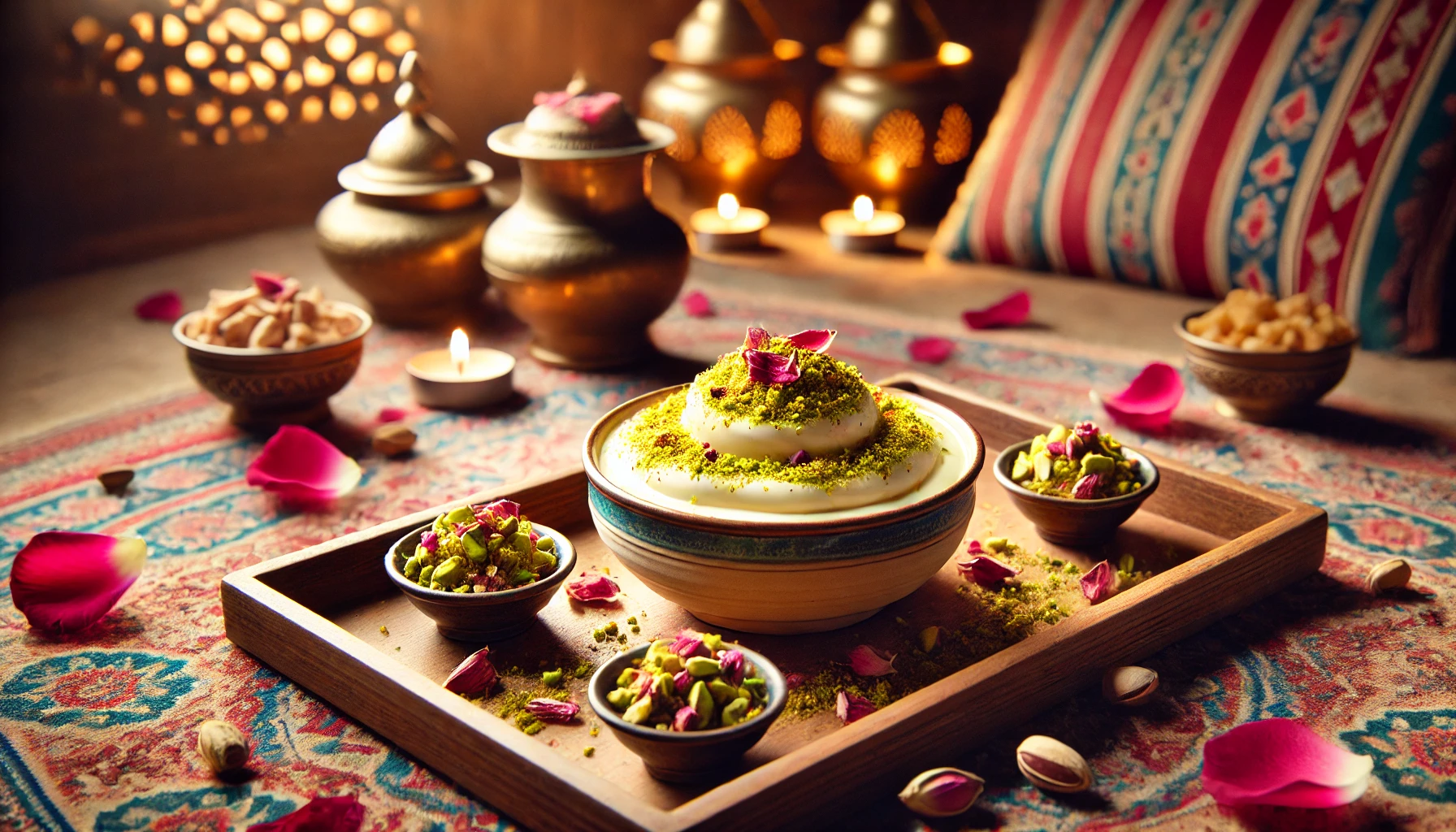Muhalabieh, a creamy and fragrant Middle Eastern dessert, holds a special place in the culinary traditions of the region. Its history, symbolism, and widespread popularity make it more than just a delightful dish. Exploring what is the cultural significance of muhalabieh unveils a rich tapestry of heritage, celebration, and family bonding.
The Origins of Muhalabieh
Muhalabieh, also spelled mahalabia or mahalebi, traces its origins to ancient Persia and the Levant. Its name is said to derive from the word “muhalab,” referring to a governor under the Umayyad dynasty who popularized the dish. Initially, it was a luxurious treat prepared for royalty and nobility due to its rich ingredients and aromatic flavors.
Ingredients That Define Tradition
The ingredients of muhalabieh are simple yet symbolic, reflecting the essence of Middle Eastern hospitality and resourcefulness:
- Milk: A symbol of nourishment and purity.
- Sugar: Represents sweetness in life and celebration.
- Rosewater or Orange Blossom Water: Adds fragrance, often linked to festivity and spirituality.
- Cornstarch or Rice Flour: Ensures the silky texture, symbolizing care in preparation.
Muhalabieh’s Role in Middle Eastern Culture
Muhalabieh is more than a dessert; it plays a vital role in various cultural practices:
- Festive Celebrations: It is a staple during Ramadan, Eid, and weddings, symbolizing joy and abundance.
- Family Bonding: Preparing muhalabieh together fosters connections across generations.
- Hospitality: Serving muhalabieh to guests is a gesture of warmth and respect.
The Symbolism Behind Muhalabieh
This dessert embodies cultural values such as:
- Simplicity and Elegance: Highlighting the beauty of modest ingredients elevated through care and creativity.
- Community Spirit: Sharing muhalabieh strengthens bonds within families and communities.
- Tradition and Innovation: While its recipe has ancient roots, modern variations showcase adaptability.
Modern Takes on Muhalabieh
Although the traditional recipe remains beloved, innovative twists have emerged to cater to evolving tastes:
- Infused Flavors: Vanilla, saffron, and even chocolate variations.
- Unique Garnishes: Toppings like pomegranate seeds, caramel, or exotic nuts.
- Dietary Adaptations: Dairy-free and sugar-free versions for health-conscious individuals.
These adaptations preserve the cultural essence of muhalabieh while making it accessible to global audiences.
What is the Cultural Significance of Muhalabieh
As Middle Eastern communities spread globally, so has the popularity of muhalabieh. You can find it in restaurants and homes worldwide, symbolizing the fusion of traditional and modern culinary practices.
Countries like Turkey, Lebanon, and Jordan have their versions, often served with regional variations in garnishes and flavors.
How to Prepare Traditional Muhalabieh
Here’s a simple guide to making authentic muhalabieh at home:
Ingredients:
- 4 cups milk
- ½ cup sugar
- 3 tablespoons cornstarch
- 1 tablespoon rosewater or orange blossom water
- Crushed pistachios or almonds for garnish
Method:
- Dissolve cornstarch in 1 cup of cold milk.
- Heat the remaining milk and sugar in a saucepan until warm.
- Slowly add the cornstarch mixture while stirring continuously.
- Cook over low heat until the mixture thickens.
- Remove from heat and add rosewater.
- Pour into serving dishes, let cool, and refrigerate.
- Garnish with nuts before serving.
Benefits of Muhalabieh in Celebrations
Muhalabieh is a favorite choice during celebrations for several reasons:
- Ease of Preparation: Requires minimal ingredients and effort.
- Cultural Significance: Enhances the festive atmosphere by linking to traditions.
- Universal Appeal: Loved by people of all ages, making it ideal for gatherings.
Challenges in Preserving Its Cultural Significance
As global culinary trends evolve, maintaining the authenticity of muhalabieh can be challenging:
- Mass Production: Commercial versions may sacrifice quality for convenience.
- Loss of Tradition: Younger generations may not fully understand its cultural roots.
- Globalization: The influx of foreign desserts may overshadow traditional dishes.
However, cultural enthusiasts and culinary experts work tirelessly to keep its legacy alive.
Why Muhalabieh Continues to Thrive What is the Cultural Significance of Muhalabieh
The enduring appeal of muhalabieh lies in its ability to connect people to their heritage while adapting to modern tastes. Its cultural significance ensures it remains a beloved dish for generations to come.
FAQs About What is the Cultural Significance of Muhalabieh
Why is muhalabieh significant during Ramadan?
Its light and refreshing nature make it an ideal dessert after fasting, symbolizing nourishment and joy.
What makes muhalabieh unique compared to other desserts?
Its simple ingredients, delicate flavors, and cultural symbolism set it apart.
Can muhalabieh be served warm?
Traditionally, it is served cold, but warm versions exist in some regions.
How has globalization affected muhalabieh?
While it has increased its popularity, there is a risk of losing authenticity through commercialization.
Is muhalabieh suitable for people with dietary restrictions?
Yes, with adaptations like plant-based milk and sugar alternatives, it can cater to various dietary needs.
What are the most popular garnishes for muhalabieh?
Pistachios, almonds, rose petals, and pomegranate seeds are commonly used.



